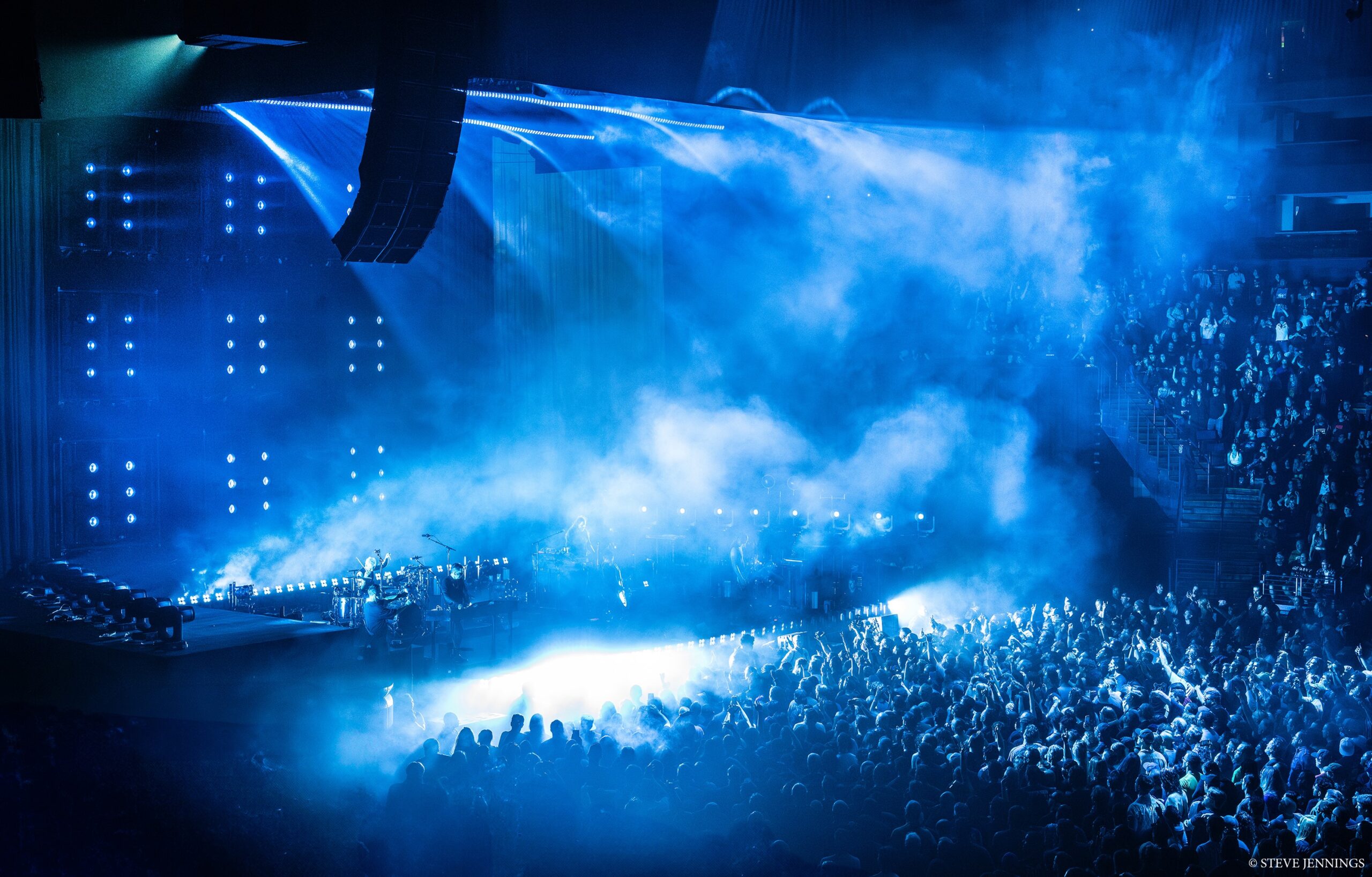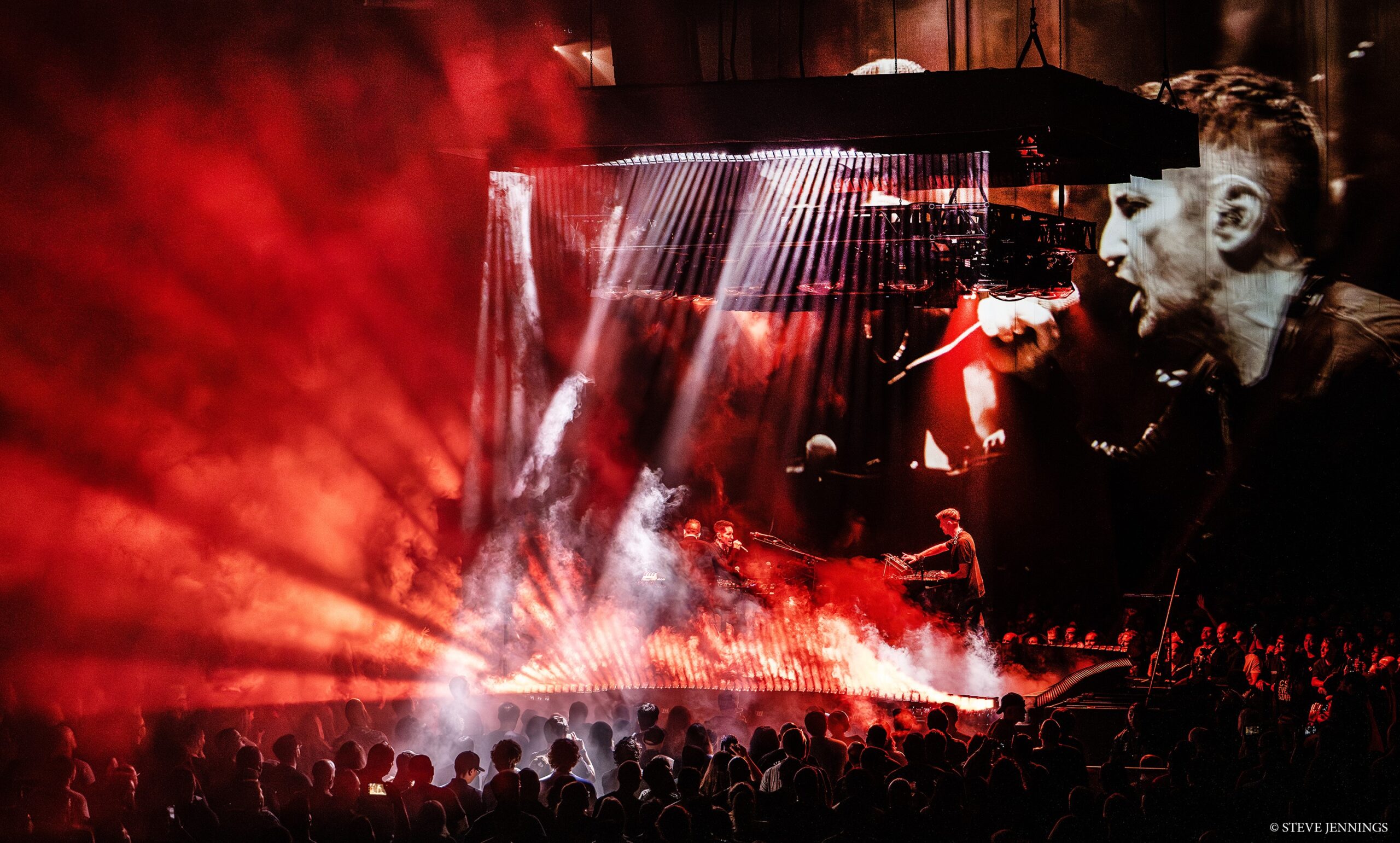COLORado PXL Curve Peels Back Layers For Nine Inch Nails
Posted on November 4, 2025
“I see the statue in the marble and chip away until I set it free,” Michelangelo is supposed to have said. The Renaissance genius was echoing a deep desire that has powered creatives of all types through the ages: to peel back external layers of expectations and reveal new possibilities!
This sentiment is beautifully reflected in Nine Inch Nails’ aptly named “Peel It Back” tour, which ended its 38-city global summer run on September 19 at the Kia Forum. (The tour will begin a second North American leg on February 5 in New Orleans.) Universally hailed by critics, who praised its “notable artistic ambition,” the tour’s four-act show boldly unveils new ideas in terms of its music (a reimagined soft take on the unsettling “Ruiner” is but one example), and visuals (a 3D cubic set with three stages and layers of light often coming from the deck itself).
The result of an intense collaborative effort involving lighting designer Paul (Arlo) Guthrie, Todd Tourso, and Mel Roy of MTLA, as well as Cory Fitzgerald of Silent House, the stage production peels away familiar notions to immerse fans in a transcendent visual journey.

This journey begins on the 360° B stage located in the middle of the arena floor, where frontman Trent Reznor performs “A Minute To Breathe” lit by CHAUVET Professional OnAir Panel soft white lights, and later moves on to a full-fledged visual blitzkrieg on the main stage.
Guthrie, NIN’s longtime designer, described how it all came together. “We had an anti-technology and zero video design aesthetic since 2017, so we decided we wanted a larger-scale production for Peel It Back. Todd, Mel, and Cory first floated the idea of having two cubes. Over the course of six months, and some experiments with different materials, we evolved it into the A stage and B stage concepts with scrims on the A stage for Act 2 of the four acts.
“Using projection and fairly sparse lighting, we created the 3D layered effect that was the crux of the second act, leaning into the songs that Trent picked to live in that world,” continued Guthrie. “When we get back to the A stage for Act 4, I used the PXL Curves to create sheets of lights and curtains to layer dimension onto the bare stage.”

Guthrie notes that his rig’s 171 COLORado PXL Curve 12 Battens, supplied by Upstaging in the USA and Neg Earth in the EU, are at the heart of the design on all stages. “They are the foundation of the design and provided the very linear look that’s the design’s signature,” he said of the CHAUVET Professional fixtures. “I use them in the entire rig. There are parallel lines of them over the A stage for back and downlighting. Then there are 21 of them on rotators for panning and creating different shapes in the overhead. They’re also used for audience lighting – and they defined the B Stage deck.
“I was able to map them and use a Touch Designer patch written by Kyle Meredith, and trigger them from my finger on an iPad,” continued Guthrie, who operated the multi-faceted show without timecode. “They provided sheets of light, wave chases, cages, footlights, wash lights, house lights – they worked hard!”
Continually changing the geometric shapes created with his PXL fixtures, as well as his brightness levels, dark space areas, and pace of his strobing, Guthrie artfully created different moods on stage. “Fortunately, I have a lot of tools in my toolbox, which allows me to give each song a distinctive look,” he said. “Each of the show’s four acts has its own set of surprises that continually evolve, revealing new elements.”
Revealing new, surprising elements all along the way? How fitting for a show steeped in the artistic tradition of “peeling back!”